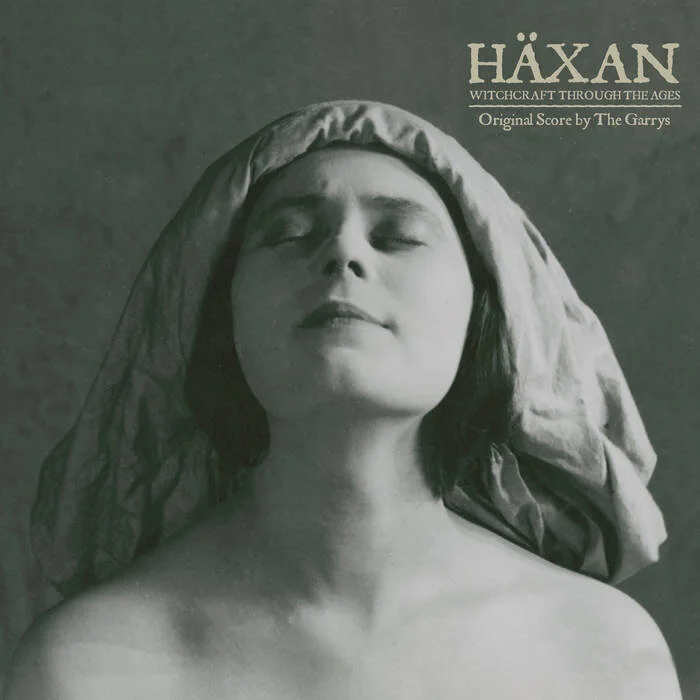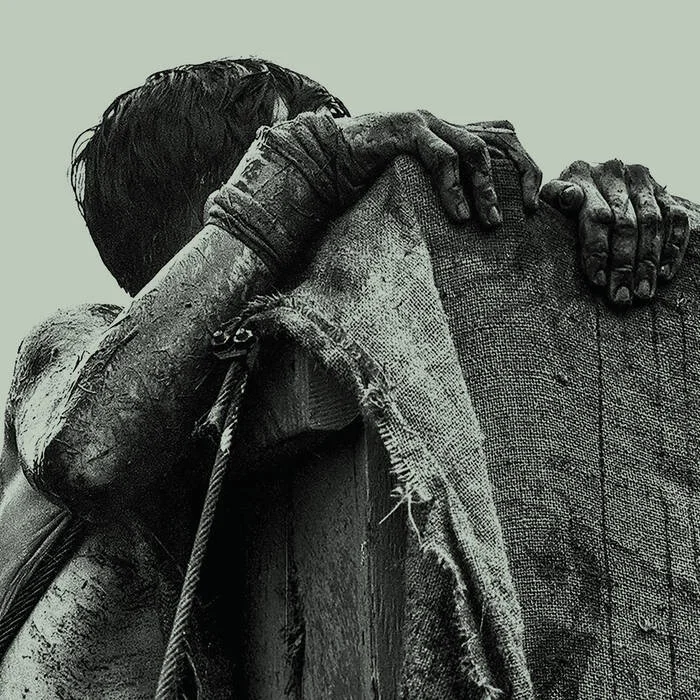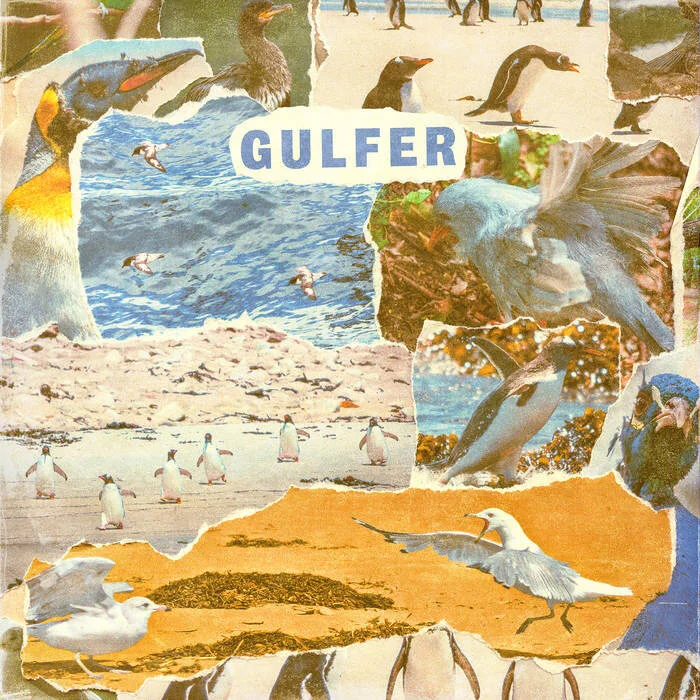The Garrys/Metz/Gulfer
The Garrys
Häxan: Witchcraft Through the Ages // Grey Records
At an hour and sixteen minutes, Häxan: Witchcraft Through the Ages by The Garrys is suspiciously close to the run time of the maxed-out burnt CDs from my youth. However, hearing the first track “Underworld/Overture,” and not “Welcome to the Jungle” by GNR or “Yeah” by Usher quickly distinguishes this music from the typical burnt CD tripe of those custom compilations, and trades it for haunting grooves, eerie oohs and dark shades of surf.
Over the last few years The Roxy Theatre in Saskatoon has hosted live performances of bands playing original scores to old creepy silent films for Halloween. Following spots by Mahogany Frog, Shooting Guns, and New Jacobin Club, The Garrys represented a new direction for the event. While NJC were an obvious choice for the project thanks to their love of gothic themes and twisted visuals, and Mahogany Frog and Shooting Guns were already known for creating moody instrumental music prior to creating scores for Nosferatu and Faust, The Garrys had made a name for themselves with catchy surf rock and entrancing vocals. While certainly wistful, their music didn't necessarily scream horror score. I was lucky enough to catch the live performance of The Garrys playing their score at the Roxy while the 1922 silent film played on the screen behind them last Halloween, and it was immediately apparent that these prairie surf rock sisters were up to the task of matching the spooky visuals with their own hexing grooves.
As expected, the music they’ve created for Häxan feels a little darker than their previous output, but fans of The Garrys will recognize sounds of their surfy wheelhouse that come through in songs like “Djävulen” and “Häxsabbaten.” In general, the music here is slower, and has a minimalist sensibility (it was all performed live alongside the film after all). On “Apelone’s Dream” there’s plenty of space in the intro as drone sounds flow in and out, before bass and drums provide a path for the pulsing accordion, eventually leading to a waltzing oom pah pah section four minutes in. In addition to the accordion, the album features a haunting trombone that squares off with an intrepid bassline on “Maria the Weaver.” At times the music recalls moody peers such as The xx, murky creep-outs by Thee Oh Sees or The Residents, as well and the melancholic jangle of Jesus and Mary Chain and their clones, but The Garrys carve out their own jack-o’-lantern sound on this soundtrack.
These reference points are helpful, but ultimately fall short since this is an entirely different type of album. In some ways this Häxan score has more in common with Thom Yorke’s Suspiria (Music for the Luca Guadagnino Film) or even Mica Levi’s Under the Skin in that there are extended moments of tension that attach an eerie flavour to the macabre visuals on screen. The music serves a different function than the band’s previous work since it’s meant to supplement the film, and the band does a great job of serving the film, rather than competing for the viewer’s attention. Without the film, the music is rich, but never demanding. While the combo of drums, bass and guitar is the standard, the structure of the album fits with less rock-based scores in that there’s an overture to start things off, and various motifs that return in different skins throughout. “Karna” and “Djävulen” receive uncanny reprises in the album’s second half, and “Maria the Weaver” is reworked for guitar on its reprise, bringing the song into desert psych territory. Essentially, this is a musical score that sounds like a musical score and it’s a damn good one.
Creepy grooves, and the odd horror movie bit such as a ghostly nursery rhyme reading or breathy accents that sound like they might be hinting at the anachronistic arrival of Jason Voorhees, help this soundtrack to perfectly accompany this beloved hundred year old film. However, since The Garrys keep the grooves coming and avoid long stretches of dissonance, they have succeeded in creating a piece of music that works as a musical aid to its muse, but that also works as an enchanting listen on its own. Leave a spot open between your Alice Cooper and Oh Sees records this Halloween and give Häxan: Witchcraft Through the Ages a spin.
- Devon Dozlaw
Metz
Atlas Vending // Sub Pop
It’s been a long time since Metz first burst of absolutely crushing noise-rock demanded the attention of the world. It’s even been a relatively long time since Metz released their previous (proper) record with 2017s Strange Peace, particularly in today’s current era where so many bands outside the mainstream prefer to be prolific (this is doubled in the Covid era where home recording and endless free time has produced an explosion of creative output (to come)). Coming into their fourth record Metz have found a way to keep pushing forward in their sound despite working within a genre that can often be one dimensional.
Metz’ first two albums METZ and II showed off the truly unrelenting force Metz are when at full force. While both records are spectacular, the mercilessness of those releases pay off to the greatest extent live, but is almost unrelenting as a listening experience. For many that may be ideal, but it undoubtedly adds a level of inaccessibility to Metz. 2017s Steve Albini produced Strange Peace highlights a Metz breaking beyond ruthless thrashing with a more rounded sound. Throughout, Strange Peace is noisier but not as persistent, often focusing less on drive and a lot of more on tone and overall mood. Tracks like “Caterpillar” and “Sink” sprinkled needed breaths of sonic fresh air between the heavy pulsing of tracks like “Mr. Plague” and driving punk of “Dig a Whole.” Steve Albini’s signature emphasis of cavernous room sound provides textures unseen on past Metz records. Strange Peace proved Metz were more than a one trick pony but how do you follow a record up like that and keep pushing the envelope of noise rock especially when counterparts like Daughters are doing the crazy shit they did with 2018s You Won’t Get What You Want or the swirling wall of sound of Girl Band’s The Talkies.
With Atlas Vending, Metz were unwavering in their idea that this record wasn’t complete until they felt the record was a new step in their sound. The most discernible difference LP four brings to the Metz catalogue is its sense of melody. The 1:36 long speedy punk track “No Ceiling” contains the hookiest chorus in their catalogue while “Hail Taxi” is the closest thing to a love song you’ll get from the Toronto based noise punks.
Album opener “Pulse” lies in its intensity as guitarist and vocalist Alex Edkins chants in his monotone way in front of a backdrop of heavy bass shots and crushing drums till the band finally gives in. Falling apart into the chorus, only building till the final thrashes bring the listener back to reality.
“Blind Youth Industrial Park“ follows up with a satisfyingly spastic and fun lead riff kicking off a furthered frenzy, feathering in harmonies over chorus’ adding to the melodic tone of the record. But the battering ram that is Metz is still pummeling everything in its sights. Everything to be desired within a Metz record soars in full flight with Alex Edkins pointed barks and bloody guitar riffs, Chris Slorach’s always in the red driving bass style and Hayden Menzies beating the absolute shit out of the drum kit. The bending squeals, circling bass and thrashing drums of “Draw Us In” along with the rapid pace of punk scorcher “Parasite” hit on every level of early Metz releases.
“Framed By The Comet’s Tail” and the album closer, “A Boat To Drown In”, excel in their ability to take the foot off the pedal, focusing on repetition and atmosphere and never getting too far off the rails. In a genre like noise-rock, where in a lot of cases bands end up becoming one dimensional these tracks are just another testament to Metz capacity to shift and grow with each release. Atlas Vending is Metz at their most pointed, thoughtful and dynamic. It hits all the marks of their previous records while adding another layer to their evolving sound and it proves why Metz deserve to be regarded as one of the best in noise-rock.
- Kennedy Pawluk
Gulfer
Self Titled // Royal Mountain Records
Is emo still a thing? The age old question rests on the tongues of those old enough to remember the genre's brief but powerfully usurpation of pop-punk's reign in the early 2000s. Lucky for us, Montreal’s Gulfer is here to remind us of the fractures in our hearts. The self-titled emo math-rock album is a nostalgic trip with the promise of a new direction.
The album’s intro starts with thirty seconds of guitar that has a digital edge to it invoking the cold logic of machines, before moving into “Blurry” with a head nodding beat and the echos of the digital intro now warmed over with the sounds of vocals sung with all the feels.
On “Forget (Friendly),” the vocals run from deadpan ambivalence to hysterical screaming from chorus to verse. A refreshing lyric asks of the love interest “am I wasting your time?” suggesting that the band’s new definition of emo includes a touch of emotional intelligence.
For fans of The Weakerthans, Mall Song’s intro situates Gulfer firmly in the Canadiana camp, while “Nature Kids” brings out the band’s driving rock side. On “Heat Wave” the crashing drums and danceable rhythm reinforce Gulfer’s live show appeal. The songs feel familiar but arrive with a fresh sense of excitement that make the listener want to dance and shout. Pre-COVID (in the before times), there is no doubt that Gulfer would have the whole audience up on their feet. Luckily, fans can throw this album on, practice their moves, and build the anticipating of adding yet another live show to the list.
There is no question that the album packs the much needed punch of fast-paced punk inspired songs balanced with the soft-sung lyrics of a genre now past. On the outro we get a bittersweet ending to the album, suggesting a contemplative structure beneath the heart-pumping beats and lyrics sung with explosive urgency.
- J. Leslie



